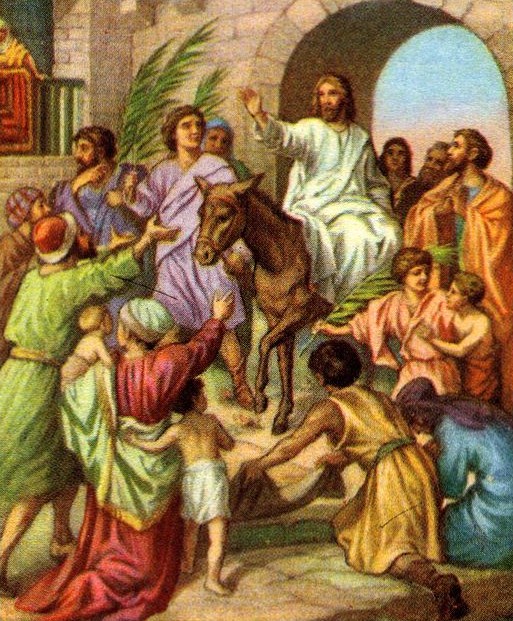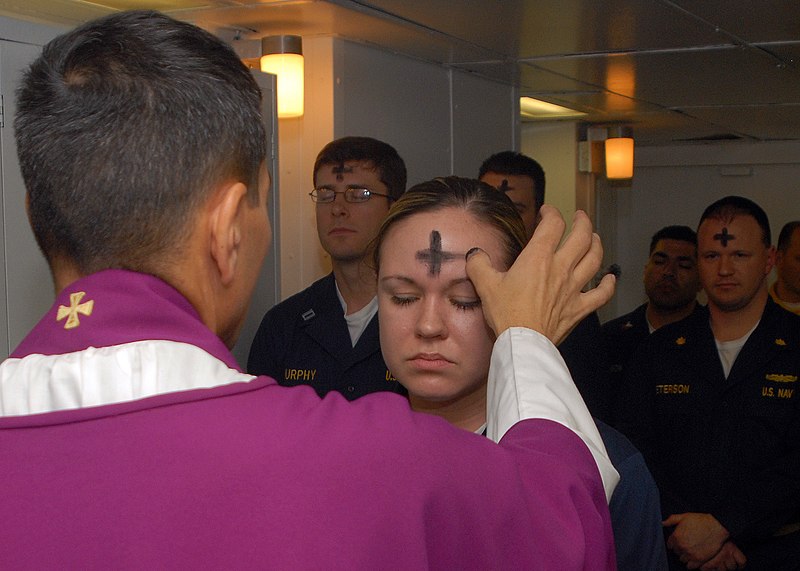26-به بچه های خود از کودکی نیاموزید چگونه پولدار بشوند بیاموزید چگونه انسان بشوند.چون پولی دست آورند در راه کار خیر رسانی آنها مادی نمیشود بلکه منفعت خیریت برای زنجیره انسانی میشود.
27-نزد خدا هر غیر ممکنی ممکن هست.یعنی نزد خدا سرنوشت انسانها هست.خدا میداند زیرا همه وقایع را دیده انسان ها آیا همه وقایع را دیده اند اگر دیده اند که خدایند.اگر هم ندیده اند میتوانند بفهمند به میزان آن.فهمیدن یعنی اتصال رشته الهی در مکشوفات الهی.
28-انسانی با خیال و حدس نمیتواند حقیقت را بفهمد مگر با آشکار شدن حقیقت.آنهم به میزان دریافتن حقیقت بر تفکر.
29-مسئله سر اینکه چگونه رفتار شد با منجیان نیست مسئله روز حقیقت ها هست که کدام قوم چگونه رفتار کردند با منجیشان و چگونه حقیقتا سرفراز کردند نه خوار.چون چیزی نیست که مکشوف نشود و نه حقیقتی الهی که پنهان بماند.این حقیقت محض هست.
30-دجال را ضمن پر شدن فهمیدم و دجال را طبق تحقیقات هم فهمیدم.یک سمت آن از یک چشم.یک سمت آن از یونان.خدایان تک چشم آمیخته با افسانه.مجسمه های مانده یک چشمی .یک سمت آن خدا کند آدم با یک چشم وارد بهشت شود تا با دوچشم وارد جهنم.یک سمت آن کلمه کفر پیشانی مراسم عیدی.در دینی.
31-یک سمت آن در یک اندیشه پیدا کردم که مثلث میشد.و چگونه اندیشه هایی خواستند تا یک نفر را بزنند.بعد شد دومین فهمیدم که مثلث چقدر جابجایی را تنظیم میکند.تازه بنیاد ها ویران نمیشود اما کخ زدگی ها منافع میشوند و هرم چقدر گردش میکند.
32-بعد آب دهان کم زیاد کردن های آنها.بعد سوار بر خری وارد اورشلیم.40 روز.اداعای خدایی.یا افراد کنار یک نبی دروغین افراد خائن هستند.چقدر تلاش زیادی میکنند.
33-بعد متوجه این مسئله شدم که چگونه این افراد به آن داوری و جهان بعد بی ایمانند.کاش یکی از بازماندگانشان به آنها با همان اساس زمینی خود میامد همه ی آنها مومن میشدند.
34-به این باور رسیدم که مناطق را خوب میشناسند.جغرافیای جهانی را. اما به این باور رسیدم. که چقدر هرمه تعیین زمان چینش میکند.و از چه افرادی سر چه جریاناتی سوء استفاده میکنند. و چقدر رسانه قوی دارند.
A cyclops (meaning ‘circle-eyed’) is a one-eyed giant first appearing in the mythology of ancient Greece. The Greeks believed that there was an entire race of cyclopes who lived in a faraway land without law and order. Homer, in his Iliad, describes the Cyclopes as pastoral but savage, typical of the strange creatures the Greeks created to represent foreign societies not regarded as civilised as themselves. The Cyclopes are not without talents, though, and are credited with manufacturing the thunderbolts which Zeus used as a terrible throwing weapon and as the builders of gigantic fortification walls such as those still seen at Mycenaean sites today. The most famous cyclops is Polyphemus, who captured the Greek hero Odysseus and his men only for them to escape by blinding the poor giant. Cyclopes, and particularly the Odysseus story, were popular and enduring subjects in all forms of Greek and Roman art.
Seeing the gravity of the situation, Odysseus, known for his intelligence and quick wits, developed a cunning plan of escape. Tempting Polyphemus with wine until the cyclops was drunk, the hero ordered his men to turn Polyphemus’ olive-wood staff into a spike, this they then hardened in a fire and then used it to blind the cyclops while he slept. Unable to see and understandably livid at his treatment, Polyphemus tried to catch the still trapped travellers by feeling his sheep as they left the cave for their grazing. Odysseus then instructed his men to tie themselves to the bellies of the sheep whilst he chose a ram for the purpose, and thus they escaped to continue their voyage. However, the cyclops, after unsuccessfully hurling a boulder to try and smash the fastly-disappearing Greek ship, cursed Odysseus, predicting the loss of his men, a wearisome voyage home, and disaster when he finally arrived there. Calling on the help of his father Poseidon, Polyphemos ensured that it would be many a storm and ten long years before Odysseus reached Ithaca. In Greek mythology and later Roman mythology, the Cyclopes (/saɪˈkloʊpiːz/ sy-KLOH-peez; Greek: Κύκλωπες, Kýklōpes, "Circle-eyes" or "Round-eyes";[1] singular Cyclops /ˈsaɪklɒps/ SY-klops; Κύκλωψ, Kýklōps) are giant one-eyed creatures.[2] Three groups of Cyclopes can be distinguished. In Hesiod's Theogony, the Cyclopes are the three brothers Brontes, Steropes, and Arges, who made for Zeus his weapon the thunderbolt. In Homer's Odyssey, they are an uncivilized group of shepherds, the brethren of Polyphemus encountered by Odysseus. Cyclopes were also famous as the builders of the Cyclopean walls of Mycenae and Tiryns.
Three groups of Cyclopes can be distinguished: the Hesiodic, the Homeric and the wall-builders.[3] In Hesiod's Theogony, the Cyclopes are the three brothers: Brontes, Steropes, and Arges, sons of Uranus and Gaia, who made for Zeus his characteristic weapon, the thunderbolt. In Homer's Odyssey, the Cyclopes are an uncivilized group of shepherds, one of whom, Polyphemus, the son of Poseidon, is encountered by Odysseus. Cyclopes were also said to have been the builders of the Cyclopean walls of Mycenae and Tiryns.[4] A scholiast, quoting the fifth-century BC historian Hellanicus, tells us that, in addition to the Hesiodic Cyclopes (whom the scholiast describes as "the gods themselves"), and the Homeric Cyclopes, there was a third group of Cyclopes: the builders of the walls of Mycenae.[5] Hesiod, in the Theogony (c. 700 BC), described three Cyclopes: Brontes, Steropes, and Arges, who were the sons of Uranus (Sky) and Gaia (Earth), and the brothers of the Titans and Hundred-Handers, and who had a single eye set in the middle of their foreheads.[6] They made for Zeus his all-powerful thunderbolt, and in so doing, the Cyclopes played a key role in the Greek succession myth, which told how the Titan Cronus overthrew his father Uranus, and how in turn Zeus overthrew Cronus and his fellow Titans, and how Zeus was eventually established as the final and permanent ruler of the cosmos.[7] The names that Hesiod gives them: Arges (Bright), Brontes (Thunder), and Steropes (Lightning), reflect their fundamental role as thunderbolt makers.[8] As early as the late seventh-century BC, the Cyclopes could be used by the Spartan poet Tyrtaeus to epitomize extraordinary size and strength.[9] The Cyclopes' prowess as craftsmen is stressed by Hesiod who says "strength and force and contrivances were in their works."[19] Being such skilled craftsmen of great size and strength, later poets, beginning with the third-century BC poet Callimachus, imagine these Cyclopes, the primordial makers of Zeus' thunderbolt, becoming the assistants of the smith-god Hephaestus, at his forge in Sicily, underneath Mount Etna, or perhaps the nearby Aeolian Islands.[20] In his Hymn to Artemis, Callimachus has the Cyclopes on the Aeolian island of Lipari, working "at the anvils of Hephaestus", make the bows and arrows used by Apollo and Artemis.[21] The first-century BC Latin poet Virgil, in his epic Aeneid, has the Cyclopes: "Brontes and Steropes and bare-limbed Pyracmon"[22] toil under the direction of Vulcan (Hephaestus), in caves underneath Mount Etna and the Aeolian islands.[23] Virgil describes the Cyclopes, in Vulcan's smithy forging iron, making a thunderbolt, a chariot for Mars, and Pallas's Aegis, with Vulcan interrupting their work to command the Cyclopes to fashion arms for Aeneas.[24] The later Latin poet Ovid also has the Hesiodic Cyclopes Brontes and Steropes (along with a third Cyclops named Acmonides), work at forges in Sicilian caves.[25] The fifth-century BC playwright Euripides also told the story of Odysseus' encounter with Polyphemus in his satyr play Cyclops. Euripides' Cyclopes, like Homer's, are uncultured cave-dwelling shepherds. They have no agriculture, no wine, and live on milk, cheese and the meat of sheep. They live solitary lives, and have no government. They are inhospitable to strangers, slaughtering and eating all who come to their land.[38] While Homer does not say if the other Cyclopes are like Polyphemus in their appearance and parentage, Euripides makes it explicit, calling the Cyclopes "Poseidon's one-eyed sons".[39] And while Homer is vague as to their location, Euripides locates the land of the Cyclopes on the island of Sicily near Mount Etna.[40] The Cyclopes (singular: Cyclops) were gigantic, one-eyed beings with enormous strength. Originally, there were three of them: Arges, Steropes, and Brontes; capable blacksmiths, these were the sons of Uranus and Gaea and the brothers of the Hecatoncheires and the Titans. They were imprisoned by Cronus but released by his son Zeus, for whom they forged his famous thunderbolt as a sign of gratitude. However, at a later time, poets spoke of a different type of Cyclopes, a race of dim-witted and violent one-eyed shepherds dwelling in the caves of the island of Sicily. The most famous among them was Polyphemus, the Cyclops who fell in love with Galatea and was eventually blinded by Odysseus.
Upon landing on the island of the Cyclopes, Odysseus and his sailors found themselves entrapped in the cave of Polyphemus. The Cyclops ate six of Odysseus’ men, and Odysseus had no option but to devise a quick escape plan. So, one night, he intoxicated Polyphemus and pierced his eye with a wooden stake; the next morning, he told his men to hide under the bellies of Polyphemus’ sheep, and thus he managed to smuggle them out of the cave. It was because of this act that Poseidon, Polyphemus’ father, held a decade-long grudge against Odysseus, keeping him away from Ithaca and his beloved wife, Penelope. Ash Wednesday is a holy day of prayer and fasting in many Western Christian denominations. It is preceded by Shrove Tuesday and falls on the first day of Lent[2] (the six weeks of penitence before Easter). It is observed by Catholics in the Roman Rite, Lutherans, Moravians, Anglicans, Methodists, Nazarenes, as well as by some churches in the Reformed tradition (including certain Congregationalist, Continental Reformed, and Presbyterian churches).[3]
As it is the first day of Lent, many Christians begin Ash Wednesday by marking a Lenten calendar, praying a Lenten daily devotional, and making a Lenten sacrifice that they will not partake of until the arrival of Eastertide.[4][5]
Many Christians attend special church services, at which churchgoers receive ash on their foreheads. Ash Wednesday derives its name from this practice, which is accompanied by the words, "Repent, and believe in the Gospel" or the dictum "Remember that you are dust, and to dust you shall return."[6] The ashes are prepared by burning palm leaves from the previous year's Palm Sunday celebrations.[7]
Ash Wednesday is observed by numerous denominations within Western Christianity.[8] Roman Rite Roman Catholics observe it,[note 1] along with certain Protestants like Lutherans, Anglicans,[8] some Reformed churches,[11][12] some Baptists,[13] Methodists (including Nazarenes and Wesleyans),[14][15] the Evangelical Covenant Church,[16] and some Mennonites.[17][18] The Moravian Church[19][20] and Metropolitan Community Churches observe Ash Wednesday.[21] Churches in the United Protestant tradition, such as the Church of North India and United Church of Canada honour Ash Wednesday too.[22] Some Independent Catholics,[23][24] and the Community of Christ also observe it.[25]
Reformed churches have historically not observed Ash Wednesday, nor Lent in general, due to the Reformed regulative principle of worship.[26][27][28] Nevertheless, some churches in the Reformed tradition do observe Lent today, although often as a voluntary observance.[29] The Reformed Church in America, for example, describes Ash Wednesday as a day "focused on prayer, fasting, and repentance."[3] The liturgy for Ash Wednesday thus contains the following "Invitation to Observe a Lenten Discipline" read by the presider:[30]
We begin this holy season by acknowledging our need for repentance and our need for the love and forgiveness shown to us in Jesus Christ. I invite you, therefore, in the name of Christ, to observe a Holy Lent, by self-examination and penitence, by prayer and fasting, by practicing works of love, and by reading and reflecting on God's Holy Word.[30]
Many Lent-observing denominations emphasize making a Lenten sacrifice, as well as fasting and abstinence during the season of Lent, particularly on Ash Wednesday. The First Council of Nicaea spoke of Lent as a period of fasting for forty days in advance of Easter, although it is unclear whether the prescribed fast applied to all Christians, or specifically to new Christians preparing to be baptized.[32][33] Whatever the Council's original intent, this forty-day fast came into wide practice throughout the church.[34]
While starting a Lenten sacrifice on Ash Wednesday (e.g. giving up watching television), it is customary to pray for strength to keep it through the whole season of Lent; many often wish others for doing so as well, e.g. "May God bless your Lenten sacrifice."[35] In many places, Christians historically abstained from food for a whole day until the evening, and at sunset, Western Christians traditionally broke the Lenten fast, which is often known as the Black Fast.[36][37] In India and Pakistan, many Christians continue this practice of fasting until sunset on Ash Wednesday and Good Friday, with some fasting in this manner throughout the whole season of Lent.[38] After attending a worship service (often on Wednesday evenings), it is common for Christians of various denominations that celebrate Lent to break that day's Lenten fast together through a communal Lenten supper, which is held in the church's parish hall.[39]
In the Roman Catholic Church, Ash Wednesday is observed by fasting, abstinence from meat (which begins at age 14 according to canon law 1252[40]), and repentance. On Ash Wednesday and Good Friday, Roman Catholics between the ages of 18 and 59 (whose health enables them to fast) are permitted to consume one full meal, along with two smaller meals, which together should not equal the full meal. Some Catholics will go beyond the minimum obligations put forth by the Church and undertake a complete fast or a bread and water fast until sunset. Ash Wednesday and Good Friday are also days of abstinence from meat (mammals and fowl), as are all Fridays during Lent.[41] Some Roman Catholics continue fasting throughout Lent, as was the Church's traditional requirement,[42] concluding only after the celebration of the Easter Vigil. Where the Ambrosian Rite is observed, the day of fasting and abstinence is postponed to the first Friday in the Ambrosian Lent, nine days later.[43]
Various manners of placing the ashes on worshippers' heads are in use within the Roman Rite of the Catholic Church, the two most common being to use the ashes to make a cross on the forehead and sprinkling the ashes over the crown of the head. Originally, the ashes were strewn over men's heads, but, probably because women had their heads covered in church, were placed on the foreheads of women.[69] In the Catholic Church the manner of imposing ashes depends largely on local custom, since no fixed rule has been laid down.[64] Although the account of Ælfric of Eynsham shows that in about the year 1000 the ashes were "strewn" on the head,[70] the marking of the forehead is the method that now prevails in English-speaking countries and is the only one envisaged in the Occasional Offices of the Anglican Church of Papua New Guinea, a publication described as "noticeably Anglo-Catholic in character".[71] In its ritual of "Blessing of Ashes", this states that "the ashes are blessed at the beginning of the Eucharist; and after they have been blessed they are placed on the forehead of the clergy and people."[71] The Ash Wednesday ritual of the Church of England, Mother Church of the Anglican Communion, contains "The Imposition of Ashes" in its Ash Wednesday liturgy.[72] On Ash Wednesday, the Pope, the Bishop of Rome, traditionally takes part in a penitential procession from the Church of Saint Anselm to the Basilica of Santa Sabina, where, in accordance with the custom in Italy and many other countries, ashes are sprinkled on his head, not smudged on his forehead, and he places ashes on the heads of others in the same way.[73]
یکشنبه نخل یا عید شعانین یا عید سعانین عیدی مسیحی در یکشنبهٔ قبل از عید پاک و شروع هفته مقدس است. این عید، نماد ورود عیسی به اورشلیم، در تمام اناجیل اربعه ذکر شدهاست (مرقس ۱۱:۱–۱۱، متی ۲۱:۱–۱۱، لوقا:۱۹:۲۸–۴۴، یوحنا ۱۲:۱۲–۱۹). علت نامگذاری نخل بر آن این است که هنگام ورود عیسی به اورشلیم مردم با شاخههای نخل به استقبال وی رفتند.
عیسی در بازگشت پیروزمندانه به اورشلیم در یکشنبه پیشاز عید پاک، بهجای اسب که نماد پادشاهان بود، سوار بر الاغ، نماد صلح وارد شهر شد.



































































